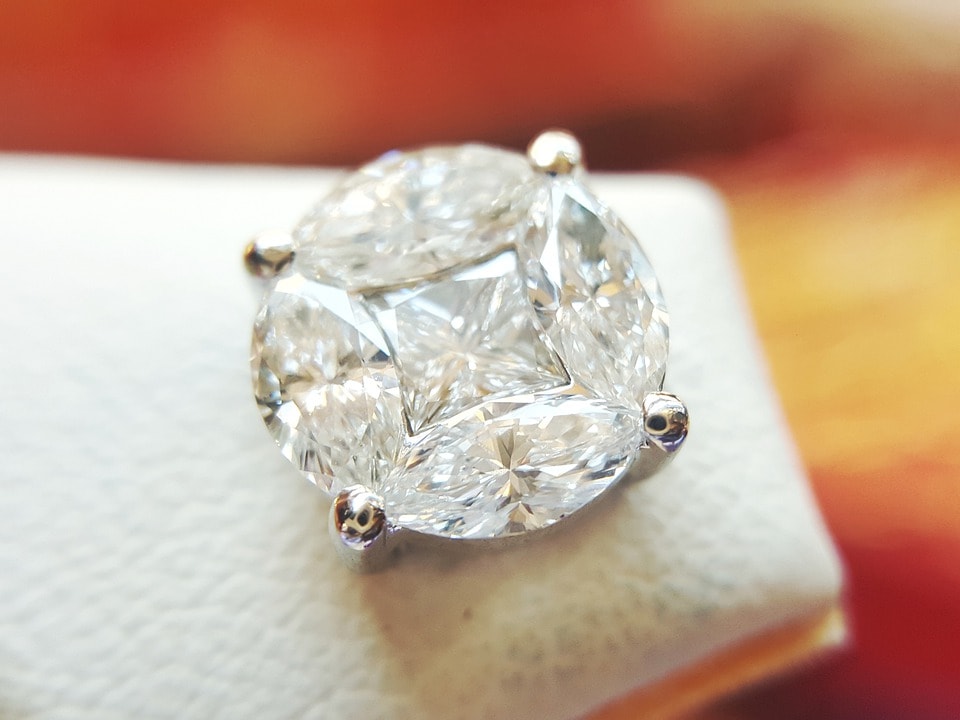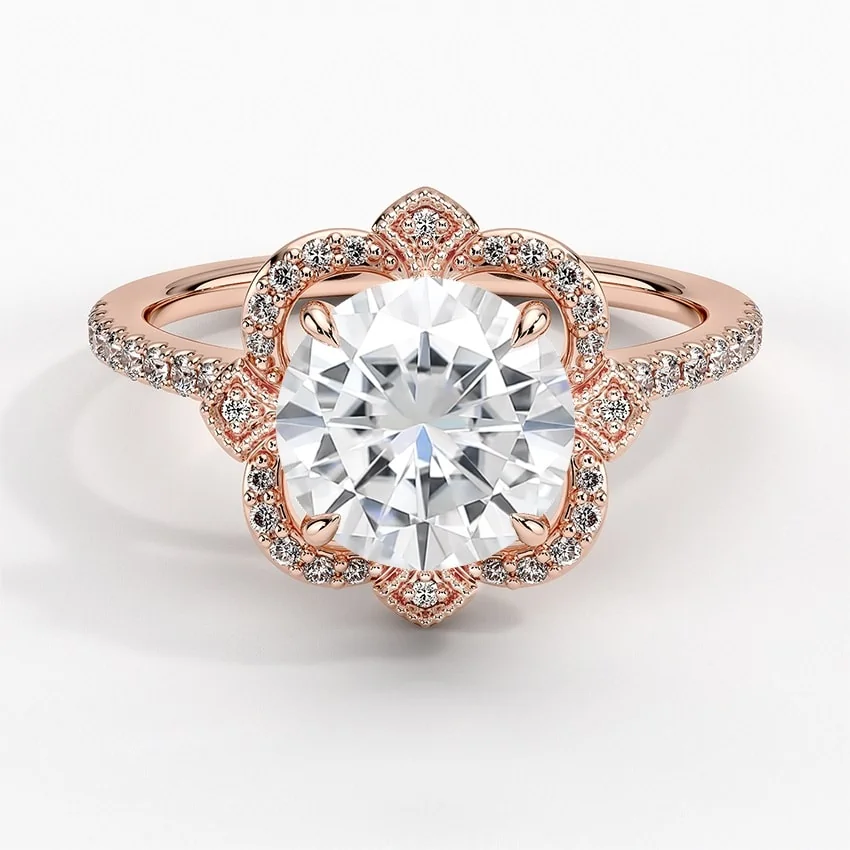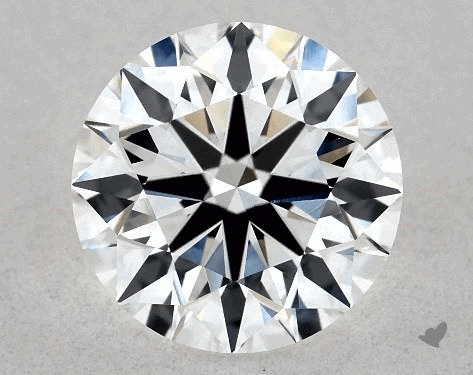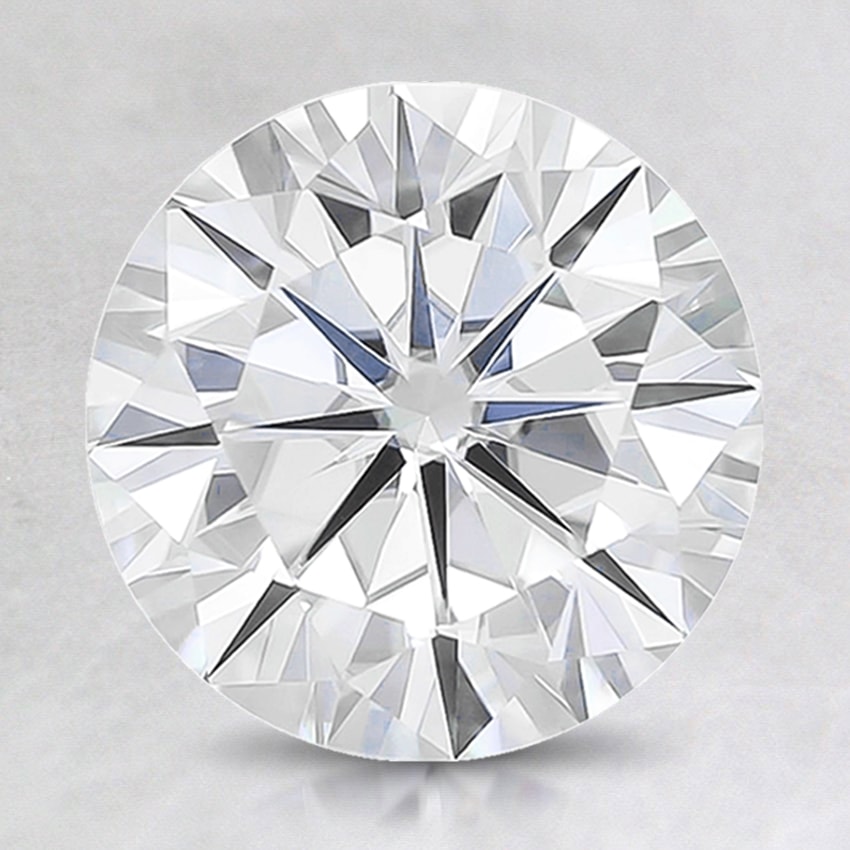
Table of Contents
As Jewelry Shopping Guide editors, we write about things that we love and we think you’ll like too. We often have affiliate partnerships, and may generate some revenue from these links at no cost to you.
When looking for alternatives to diamonds for your jewelry Moissanite and lab grown diamonds are near the top of the list. Both are less expensive than natural diamonds and both possess exceptional visual qualities, making them excellent substitutes for the precious gemstone that’s still the traditional choice for engagement rings and other types of jewelry.
How do Moissanite and lab grown diamonds compare to one another, however, and which should you choose in your search for an alternative to natural diamonds?
What is Moissanite?
Natural Moissanite is an extremely rare substance that was discovered in 1893 by French chemist and Nobel Prize winner Henri Moissan. Moissan discovered several samples of Moissanite in the crater of a meteor and decided he had found diamonds. 11 years later, in 1904, Moissan realized that the “diamonds” he had found weren’t actually made of carbon but of silicon carbide instead.
Moissan later received a Nobel Prize in Chemistry for successfully isolating fluorine from its compound – research unrelated to Moissanite. Regardless, the mineral version of silicon carbide was later named after him.
As fascinating as that is, however, modern Moissanite is not actually natural. Natural samples of Moissanite are incredibly rare – aside from Moissan’s discovery only a few more have been found in other meteor craters, in the Wyoming Green River Formation, and even rarely as inclusions inside of diamonds.

Instead, modern Moissanite in jewelry is actually grown in labs. It does possess all the same qualities of natural Moissanite, however:
- Moissanite is incredibly hard – it has a 9.25 out of 10 on the Mohs scale of hardness which is just 0.75 points below diamonds (10/10).
- Moissanite can be either colorless or near-colorless, just like diamonds.
- Moissanite also has a lot more fire (colored sparkle, essentially) than diamonds which is a unique and cool advantage in favor of Moissanite.
- Moissanite has great brilliance and can be cut in pretty much the same shapes and cuts as diamonds, making it often indistinguishable from diamonds to the naked eye.
- Moissanite is significantly less expensive than natural diamonds making it a more budget-friendly option as well. For example, a round cut Moissanite stone with ~8mm table diameter is similar in size two a 2-carat round cut diamond but costs only ~$2,000.
What are lab grown diamonds?
Just like modern Moissanite, lab grown diamonds are, well – grown in labs. And just as how lab grown Moissanite is almost identical to natural Moissanite, lab grown diamonds are virtually identical to natural diamonds.


Lab grown diamonds come in the same sizes, shapes, cuts, and colors as natural diamonds. They also possess the same brilliance, sparkle, and clarity. The only differences between lab grown and natural diamonds lie in the unique fluorescence of lab grown stone, in the absence of nitrogen in lab grown stones, and in the internal laser inscription that comes with lab grown diamonds – all three of these factors are pretty much irrelevant to the outside appearance of lab grown diamonds which means that if you don’t tell someone that your diamond is lab grown they won’t be able to tell without the use of special magnification.
And, just like Moissanite, lab grown diamonds are significantly cheaper than natural diamonds – about 30% to 50% cheaper to be exact, but sometimes even more than 50%. This makes them relatively on par with Moissanite’s prices or a little more expensive, depending on other quality and market factors.
What are the key differences between lab grown diamonds and Moissanite?
The key differences between lab grown diamonds and (lab grown) Moissanite are pretty much the same as the differences between natural diamonds and natural Moissanite, aside from their rarity.
- Lab grown diamonds have the same 10/10 Mohs hardness as natural diamonds, making them a bit harder than Moissanite and one of the few materials that can actually scratch it. This is a minor difference, however, since, at 9.25/10 Mohs hardness, Moissanite is hard enough to be used in any type of jewelry. Both are excellent for daily wear and exposure and are easy to maintain.
- Moissanite has a more colored fire/sparkle than lab grown and natural diamonds which is one of the few naked eye ways to distinguish it from them. That’s hardly an objective measurement, however, and is more of a subjective factor. Under sunlight, moissanite stones tend to exhibit a fiery and colorful sparkle, sometimes called the ‘disco ball’ effect. This is especially clear in large moissanite stones so opting for smaller ones will be one way to bypass this.
- Both Moissanite and lab grown diamonds graded but in different ways to mined diamonds. Lab grown diamonds are best certified by the Gem Certification & Assurance Lab (GCAL) and the International Gemological Institute (IGI).
- In terms of the way they are cut, Moissanite stones are cut in the same cuts as diamonds but with different priorities in the cutting process. While diamonds are cut to maximize the carat weight of the stone and the brilliance, Moissanite stones are cut to accent their superior fire and the great brilliance. The end result in terms of shape and number of facets can be the same the same, but there are subtle differences (indistinguishable for the naked eye) in how the cuts are made and how it results in brilliance.
- The way the prices of Moissanite and lab grown diamonds are formulated is also different. For lab grown diamonds the same rules are in play as with natural diamonds – a complicated pricing system that includes dozens of factors. For Moissanite, on the other hand, the size and the overall quality grade (either Premium or Super Premium) are taken into consideration when formulating each stone’s price.
- Both lab created diamonds and moissanite are ethical and sustainable gemstones with traceable origins. This makes them perfect options for someone concerned about where their gemstone comes from.
Which should you choose?
The choice between (lab grown) Moissanite and lab created diamonds is almost entirely subjective. Both are fantastic gemstones and great, budget-friendly alternatives to natural diamonds, both have their advantages as well as disadvantages.
If you’re criteria is an ethical, sustainable gemstone at a lower price but with a similar look to mined diamonds, then both these options would work well.









